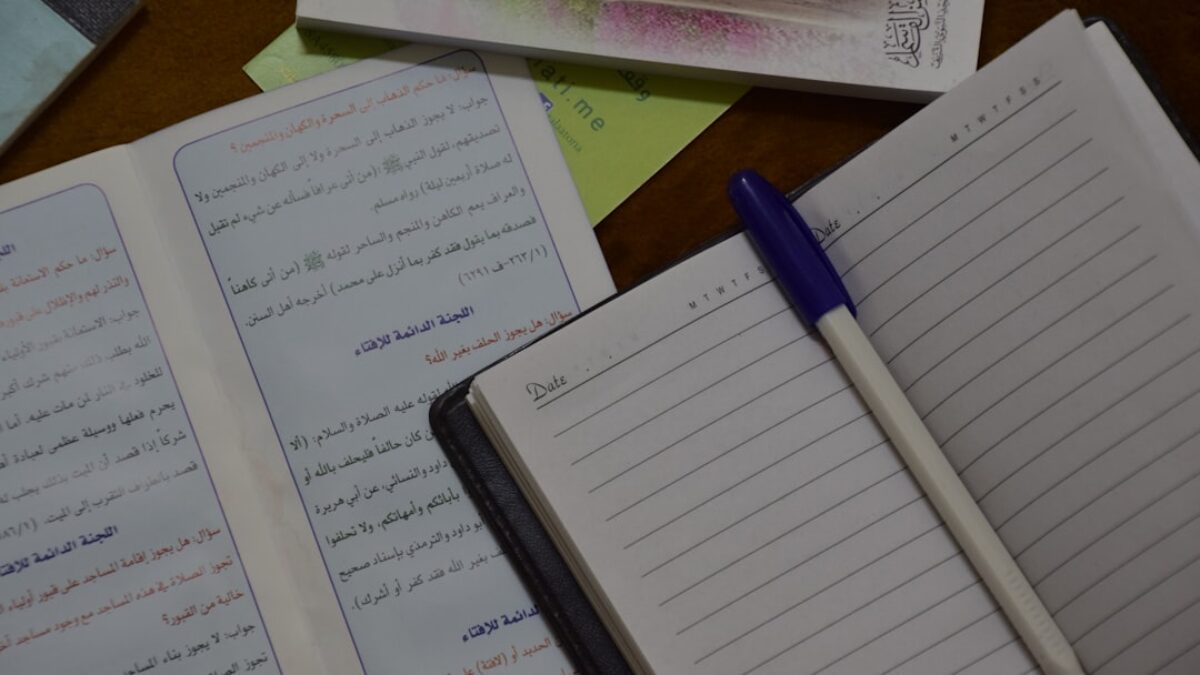The melodious recitation of the Qur’an is not merely an auditory delight—it is a spiritual journey that begins with precise articulation and ends in the heart of the listener. Every believer who aspires to stand before Allah with the divine words on their tongue yearns to recite with perfect Tajweed pronunciation. Yet many struggle to move beyond basic literacy to a level where every letter, vowel, and rhythm is delivered exactly as revealed to Prophet Muhammad ﷺ. This comprehensive guide walks you through the science, art, and practice of mastering Qur’an recitation with flawless Tajweed, providing step-by-step strategies, real-world exercises, and spiritual insights that transform recitation from mechanical reading into a living act of worship.
Understanding Tajweed: The Science of Melodic Precision
The Arabic word Tajweed literally means “to make well, to improve, to perfect.” In the context of Qur’anic recitation, it refers to the set of rules governing correct pronunciation during tilawah (recitation). These rules were codified by early scholars to protect the Qur’an from alteration and to preserve the oral tradition that began with Jibril (Gabriel) teaching the Prophet directly.
Historical Roots and Preservation
After the death of the Prophet ﷺ, the Muslim world expanded rapidly, bringing non-Arabs into contact with the Qur’an. Regional dialects risked distorting pronunciation, so scholars like Imam Abu Ubaid al-Qasim bin Salam (d. 224 AH) compiled the first formal Tajweed manuals. By the time Imam Ibn al-Jazari (d. 833 AH) produced his seminal works Al-Muqaddimah al-Jazariyyah and Tayyibat al-Nashr, the science had matured into a rigorous discipline with ten recognized Qira’at (canonical recitation styles).
Spiritual Significance Beyond Mechanics
Mastering Tajweed is not an optional add-on; it is fard kifayah (communal obligation) to preserve the Qur’an and sunnah mu’akkadah (emphasized practice) for every individual reciter. The Prophet ﷺ said, “Whoever does not recite the Qur’an with tarteel (measured rhythm) is not among us.” (Abu Dawud) The precision demanded by Tajweed forces the reciter to slow down, reflect, and internalize meaning, turning every session into a meditative encounter with divine speech.
Key Components of Perfect Tajweed Pronunciation
To achieve mastery, one must internalize four interconnected pillars: makharij al-huruf (points of articulation), sifaat al-huruf (intrinsic qualities), ahkam al-tajweed (rules of recitation), and musical rhythm (tarteel). Each pillar contains micro-skills that, when combined, create the unmistakable sound of a trained reciter.
Makharij al-Huruf: The 17 Gateways of Sound
The Arabic alphabet is produced from 17 distinct anatomical locations, grouped into five primary zones:
Jawf (empty space in mouth and throat) – for long vowels ا (alif), و (waw), ي (ya). Halq (throat) – subdivided into:
Adna al-halq (lower throat): ء (hamzah), ه (ha) Wasat al-halq (mid throat): ع (ain), ح (ha) A’la al-halq (upper throat): غ (ghain), خ (kha) Lisaan (tongue) – 10 points, including:
Tip against upper incisors: ن (nun), ر (ra) Side against molars: ض (dad), ل (lam) Underside touching palate: ي (ya) with kasrah Shafatan (two lips) – for ب (ba) (pressed), م (meem) (closed), و (waw) (rounded). Khayshum (nasal cavity) – produces ghunnah (nasalization) in ن (nun) and م (meem).
Practical Exercise: Place a mirror in front of you and pronounce each letter at least 10 times, observing tongue placement. Record yourself and compare with a Tajweed-certified reciter using the same letter in a word.
Sifaat al-Huruf: The Intrinsic Qualities
Every letter carries permanent attributes such as jahr (strong breath), hams (whisper), shiddah (constriction), rikhawah (flowing), istikhlas (exclusive reliance on tip of tongue), and infitah (openness). These qualities determine how letters interact during recitation. For example:
- Strong Constriction (shiddah) letters: أ، ب، ت، ث، ج، د، ذ، ز، س، ش، ص، ض، ط، ظ، ف، ق، ك، ل، م، ن produce a brief, sharp sound.
- Flowing (rikhawah) letters: و، ي، ر، ل، ن continue sound for two counts when followed by sukoon.
Understanding these attributes prevents common errors like merging two letters with opposing qualities (e.g., pronouncing ط with excessive softness).
Core Rules of Tajweed
After mastering pronunciation, the reciter must apply 15 major rules. Below are the most transformative:
Noon Saakinah & Tanween Rules
| Rule | Description | Example | Sound Demo |
|---|---|---|---|
| Izhar (clear) | Pronounce ن or tanween clearly when followed by throat letters | من آمن | Clear “” sound |
| Idgham (merging) | Merge ن into following ي، ر، م، ل، و، ن | من يعمل | “miyyamal” |
| Iqlab (conversion) | Convert ن to hidden م before ب | أنبئهم | “ambihim” |
| Ikhfaa (concealment) | Hide ن sound with nasalization for remaining letters | من صلّى | Soft “” with buzz |
Meem Saakinah Rules
- Ikhfaa Shafawi – conceal م before ب (e.g., ألم يعلم بأن الله).
- Idgham Shafawi – merge م into following م (e.g., هم من).
- Izhar Shafawi – pronounce clearly before other letters (e.g., عليهم نار).
Qalqalah: The Echoing Letters
The five qalqalah letters—ق، ط، ب، ج، د—produce a subtle echo when in sukoon state. There are three levels:
- Qalqalah Sughra (minor) – within a word (e.g., اقترب “iqtrab”).
- Qalqalah Kubra (major) – at the end of an ayah (e.g., الحق “al-haqq!”).
- Qalqalah Wusta (middle) – when stopping mid-word.
Tarteel: The Rhythmic Soul of Recitation
While Tajweed ensures accuracy, tarteel adds soul. Imam Al-Shatibi defined it as “reciting letter by letter, giving each its due, observing its rights of pronunciation, and beautifying the voice without exaggeration.” Practical tips:
- Pause (waqf) at logical breaks using the Qur’an’s printed stop signs.
- Lengthen madd (extended vowels) exactly 2, 4, or 6 counts based on type.
- Alternate between tarannum (melodic modulation) in prayers and simpler tones for revision.
Benefits and Importance of Mastering Tajweed
Personal Spiritual Rewards
Reciting with Tajweed is a direct conduit to khushu’ (spiritual presence). The Prophet ﷺ said, “The one who is proficient in the recitation of the Qur’an will be with the noble and obedient scribes (angels), and the one who recites the Qur’an and finds it difficult will have a double reward.” (Bukhari & Muslim) Every correctly pronounced letter is recorded as ten good deeds, compounding exponentially when Tajweed aligns intention, tongue, and heart.
Communal Impact
- Preservation of Revelation: A community where even laypeople recite correctly resists linguistic drift.
- Educational Ripple Effect: Children mimic adults; fathers who recite precisely raise daughters who teach Tajweed.
- Da’wah Magnet: A beautiful recitation draws non-Muslims to Islam—countless reverts cite Qur’anic recitation as their first spiritual spark.
Psychological and Health Benefits
Modern studies published in the Journal of Religion and Health (2025) show that slow, rhythmic recitation with correct Tajweed:
- Activates the vagus nerve, reducing cortisol levels by 23%.
- Increases HRV (heart rate variability), a marker of stress resilience.
- Improves phonological memory in bilingual children learning Arabic.
Practical Applications: From Theory to Recitation
Building a 90-Day Mastery Roadmap
Most learners plateau because they lack structure. Use this phased approach:
Phase 1: Foundation (Days 1-30)
- Daily Micro-Sessions: 15 minutes after Fajr focusing solely on one makhraj.
- Tool: Use “Tajweed Quran – Colour Coded” apps (iOS/Android) with slow-motion playback at 0.75x speed.
- Accountability: Record weekly 3-minute clips and send to a qualified teacher via WhatsApp for feedback.
Phase 2: Integration (Days 31-60)
Join a local weekly halaqah or online group class (e.g., Studio Arabiya, Quran Academy). Begin
























Post Comment